As the gentle breeze turns into a gusty wind, our outdoor spaces can transform from serene retreats to battlegrounds for our beloved ceiling fans. The harmonious hum of cooling air suddenly becomes a discordant symphony of clanking blades and straining motors. To preserve the tranquility and functionality of your outdoor oasis, it is crucial to fortify your ceiling fan against the relentless forces of nature. In this guide, we will delve into the strategies and techniques on how to protect your outdoor ceiling fan from the wrath of wind, ensuring its longevity and optimal performance in any weather condition.
The Importance of Wind Protection for Outdoor Ceiling Fans

Understanding why you need to protect your outdoor ceiling fan from wind is the first step. High winds can cause severe damage to the fan blades and motor, leading to an untimely demise and potential safety hazards. By taking proactive measures, you’re not only keeping your investment safe but also maintaining a comfortable environment in your outdoor living spaces.
Choosing the Right Location

The location of your outdoor ceiling fan can significantly impact its vulnerability to wind damage. Install your fan in a spot that’s less exposed to direct gusts. Additionally, consider areas where the airflow won’t be disrupted by structures or landscaping, which can create turbulent air patterns putting additional strain on the fan.
Secure Mounting
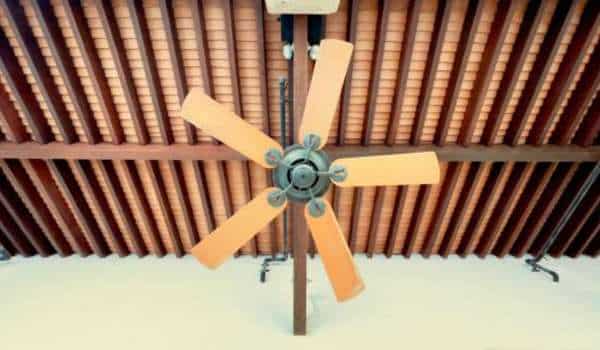
Proper installation is pivotal in withstanding windy conditions. Ensure that your fan’s mounting point is solid, using heavy-duty screws and anchors that are appropriate for your chosen surface. If you’re mounting to wood, for example, make sure to use lag bolts directly into the ceiling joists for maximum support.
Reinforce with Wind Braces
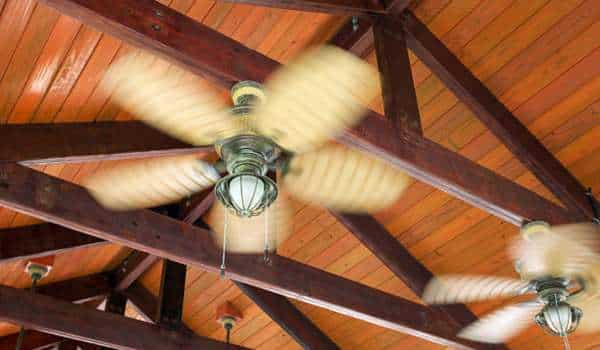
Wind braces, which are easily installed during the fan’s initial mounting, add an extra layer of security. They’re essentially stabilizers that anchor the fan to the ceiling or structure, reducing the extent of swaying during wind gusts.
Installing a Downrod Stabilizer

If your outdoor space is especially susceptible to strong winds, installing a download stabilizer can minimize wobbling and swaying. These are particularly useful for longer downloads, which can make the fan more susceptible to wind-induced oscillations.
Using Anti-Wind Clips
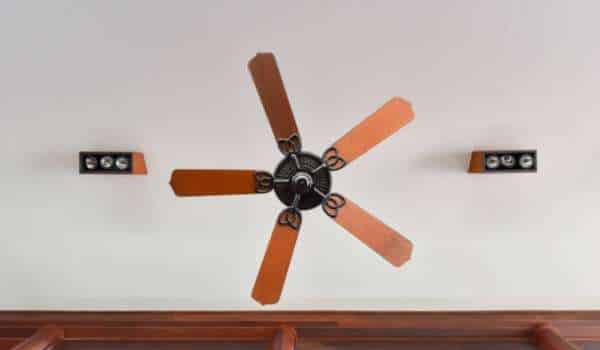
Anti-wind clips are designed to keep fan blades from moving during high-speed wind conditions, which not only preserves the fan blades but also prevents excess wear on the motor. Simple to install yet highly effective, these clips offer an extra layer of defense against damage.
Use of Sturdy Mounts and Brackets
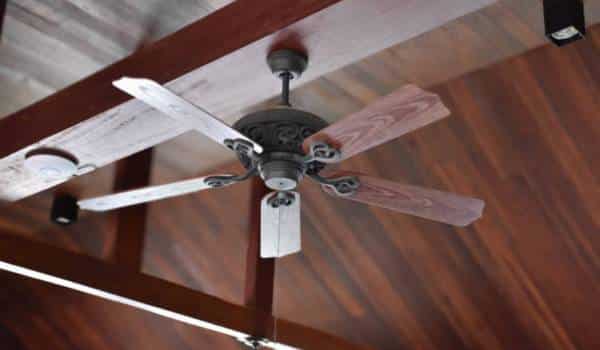
Selecting the right mounting hardware is critical. The mounting bracket is the component that keeps the fan attached to the ceiling, so it must be sturdy and capable of withstanding the forces that strong winds can exert. Often, fans come with standard mounts, but investing in sturdier options may be necessary for outdoor use, such as stainless steel mounts or galvanized steel for rust resistance.
Investing in Weatherproofing
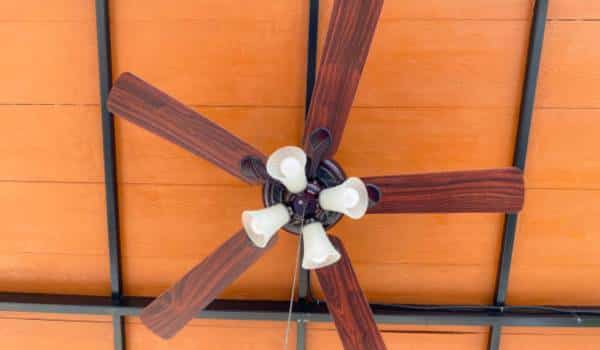
Outdoor fans need to be resilient against all kinds of weather. Ensure that electrical components are well-protected from moisture by using outdoor-rated boxes and conduits. Additionally, choose a fan with a rust-resistant finish to prevent corrosion from setting in, and regularly touch up any scratches or nicks in the coating to maintain the protective barrier.
Utilizing Wind Guards
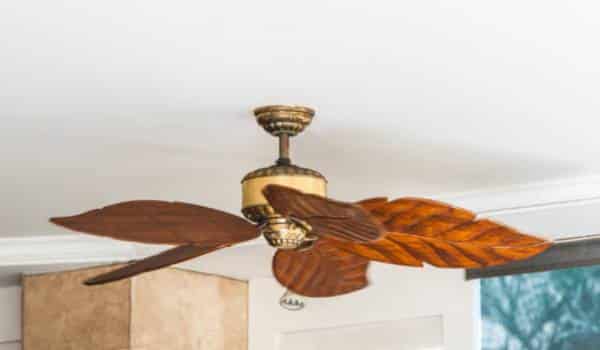
Consider using wind guards, shields made to lessen the impact of direct wind on fan blades. You can have them as permanent fixtures or temporary add-ons that you install when expecting storms.
Types of Wind Guards Available
Manufacturers usually integrate permanent wind guards into the fan design to offer ongoing protection. You can mount temporary wind guards as add-on accessories when necessary and remove them in calm conditions.
Benefits of Wind Guards for Outdoor Fans
Wind guards can help maintain the fan’s balance, reduce vibration, and prevent heavy winds from putting stress on the blades and motor. They’re particularly useful for fans that are located in consistently windy areas. While not all outdoor fans will need them, wind guards can be a practical solution to ensure your fan’s durability in severe weather conditions.
Regular Maintenance Tips
Maintenance is key to the long life and efficient operation of your outdoor ceiling fan, especially in windy environments. Regularly clean the fan blades and motor housing to remove dust, and pollen. And debris that can accumulate and unbalance the fan. Additionally, inspect the fan for any signs of wear or damage, and lubricate the motor as recommended by the manufacturer. Home Improvement
Best outdoor ceiling fan for high wind areas
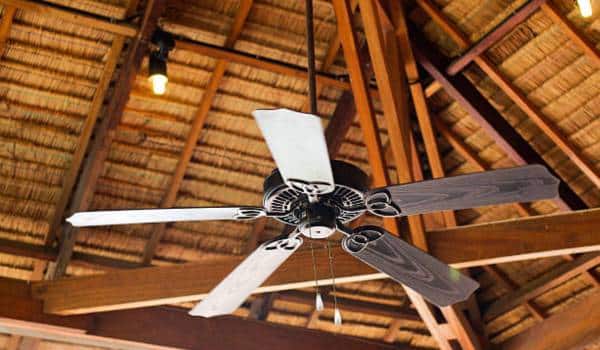
It is crucial to prioritize durability and sturdiness. Look for a fan with high-quality materials such as stainless steel or aluminum that can withstand strong gusts without bending or breaking. Additionally, consider models with reinforced blades and a secure mounting system to prevent the fan from swaying or becoming dislodged during windy conditions.
To further protect your outdoor ceiling fan from wind damage, regular maintenance is essential. Inspect the fan periodically for any signs of wear or damage, and tighten any loose screws or connections. Consider installing a protective cover when the fan is not in use to shield it from harsh weather elements. By taking these proactive measures, you can ensure that your outdoor ceiling fan remains functional and efficient even in high-wind areas, providing comfort and ventilation whenever needed.
Conclusion
By following the steps outlined in this guide. You can ensure that your outdoor ceiling fan remains a reliable and enjoyable part of your outdoor living area. From installation practices that minimize wind-induced stress to ongoing maintenance that prevents wear and tear, the effort you put into safeguarding your fan will reward you with years of use.
FAQs
Are outdoor ceiling fans safe?
Absolutely! Designers make outdoor ceiling fans to be safe and resist outside elements. These fans often feature moisture-resistant materials and come with protective motor casings to block water damage. Just ensure you pick a fan suitable for outdoor settings—aim for those tagged as “damp” or “wet” rated to match your particular outdoor situation.
How do I protect my ceiling fan?
Protecting your ceiling fan involves regular maintenance and cleaning. Dust it off frequently to prevent build-up, which can affect its balance and operation. If it’s an outdoor fan, check for rust or corrosion and tackle it early. Also, ensure the fan is turned off and securely attached during extreme weather conditions to prevent any damage.
How do I make sure my ceiling fan is secure?
To ensure your ceiling fan is secure, it’s crucial to install it correctly. If you don’t feel sure about doing it yourself, think about hiring a pro. Check that all the screws and fittings are tight to prevent wobbling. Regularly inspect the fan to ensure it’s securely attached to the ceiling and that there’s no movement when it’s operating. If it starts to wobble or make unusual noises, it might be time to check and tighten the connections or call in a pro for a thorough inspection.





